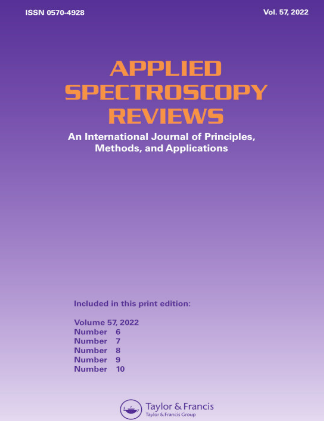表面增强拉曼光谱(SERS)在行星探测和空间研究中的进展、挑战和机遇
IF 5.4
2区 化学
Q1 INSTRUMENTS & INSTRUMENTATION
引用次数: 0
摘要
摘要表面增强拉曼光谱(SERS)能够在极低浓度下检测和量化有机分子,这使得它越来越多地应用于多个研究领域,包括生物医学、农业、食品、法医和环境监测。近年来,拉曼光谱仪在行星探测任务中的验证和运行为SERS在地域以外的潜在应用铺平了道路。为了汇编迄今发表的所有相关著作,本综述详细概述了正在研究SERS潜在用途的空间研究领域,包括天体生物学和宇航员健康监测。在列出目前限制在空间采用SERS的主要挑战的同时,本工作还详细介绍了正在研究的缓解这些挑战的主要方法和程序。关键词:行星探测;拉曼光谱;表面增强拉曼散射(SERS);本工作由西班牙研究局资助的RamOnMars项目(经济和竞争力部MINECO/欧洲区域基金,拨款PID2022-142490OB-C32)支持。披露声明作者未报告潜在的利益冲突。本文章由计算机程序翻译,如有差异,请以英文原文为准。
Surface-enhanced Raman spectroscopy (SERS) in planetary exploration and space research: a review of progress, challenges and opportunities
AbstractThe ability to detect and quantify organic molecules at extremely low concentrations makes the Surface-enhanced Raman Spectroscopy (SERS) an analytical technique increasingly employed in multiple fields of research, including biomedicine, agriculture, food, forensics and environmental monitoring. In recent years, the validation and operation of Raman spectrometers in planetary exploration missions paved the way toward the potential application of SERS beyond terrestrial domains. Aiming at compiling all relevant works published to date, the present review provides a detailed overview of the fields of space research in which the potential use of SERS is being investigated, including astrobiology and astronaut health monitoring. While listing the major challenges that currently limit the adoption of SERS in space, this work also details the main methods and procedures that are being investigated for their mitigation.Keywords: Planetary exploration; Raman spectroscopy; Surface Enhanced Raman Scattering (SERS); Space research AcknowledgementsThis work was supported by the RamOnMars project funded the Spanish Agency for Research (Ministry of Economy and Competitiveness MINECO/European Regional Fund, grant PID2022-142490OB-C32).Disclosure statementNo potential conflict of interest was reported by the author.
求助全文
通过发布文献求助,成功后即可免费获取论文全文。
去求助
来源期刊

Applied Spectroscopy Reviews
工程技术-光谱学
CiteScore
13.80
自引率
1.60%
发文量
23
审稿时长
1 months
期刊介绍:
Applied Spectroscopy Reviews provides the latest information on the principles, methods, and applications of all the diverse branches of spectroscopy, from X-ray, infrared, Raman, atomic absorption, and ESR to microwave, mass, NQR, NMR, and ICP. This international, single-source journal presents discussions that relate physical concepts to chemical applications for chemists, physicists, and other scientists using spectroscopic techniques.
 求助内容:
求助内容: 应助结果提醒方式:
应助结果提醒方式:


